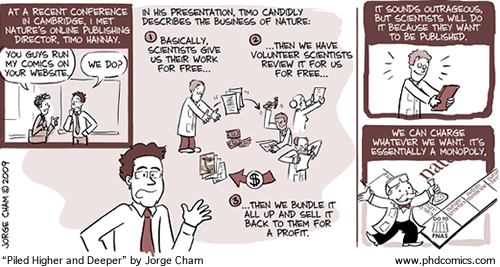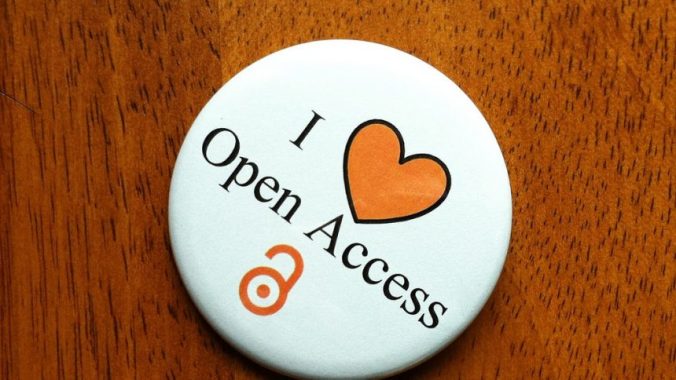Posted by Julia Kaplick @julekap
A couple of days ago I tried to explain to my parents (non-scientists, obviously) how publishing a paper works and why it is so important for us scientists. No problem to wrap your head around the publish or perish principle. Naturally they wanted to know where they could read these papers and that’s where the story became a little bit more complicated and confusing for an outsider. It just doesn’t make sense to them that scientists give their work to publishers for free and that reviewers and editors, who also put in considerable work hours don’t see a penny either. The publishing companies on the other hand earn huge amounts of money by selling single articles to individuals and more importantly journal subscriptions to numerous university and research libraries worldwide. The big publishing houses basically make their profits from selling free work from scientists back to them through the university libraries with profit margins of up to 40%. Sounds a bit insane, right?

By Jorge Cham, PhD comics (http://phdcomics.com/)
So what can we do about it? A long-term goal especially for the younger generation of scientists should be to stop publishing with the big five. In some scientific areas the five biggest publishing conglomerates cover 70% of the research output. It isn’t easy, but there is already a growing number of scientists refusing to publish with certain publishers.

Picture by Sara Thompson (cc)
Publishing open access papers or publishing in entirely open access journals is becoming more popular, but this can be expensive and in most cases still fills the pockets of the bigger publishers. A lot of funding agencies are willing to cover this cost and some even demand that the research outputs of funded projects need to be published open access. This investment might pay off through increased citations and it is certainly a step into the right direction. Swiss universities for example have announced that by 2024 all research output will be published open access.
This is of course tricky and not always possible, either because there is no funding for open access publishing or because you really want to publish in a specific journal. To make your work more accessible to scientists who can’t afford the pricy journal subscriptions you can consider putting a preprint (which doesn’t violate journal copyrights) online. This could be done on a personal blog, a Researchgate profile or you could use one of the many preprint repositories.
There are also less legal ways. A survey by Science Magazine revealed that 88% of scientists don’t think it is wrong to download pirated papers from sources like SciHub. Illegal repositories like SciHub store millions of papers and give especially scientists from developing countries a chance to access scientific knowledge. SciHub is also highly frequented by scientists from the developed world, because more and more institutions have to cut back on journal subscriptions which cost university libraries several million dollars per year. Unpaywall on the other hand is a legal way to gain access to journal articles. It is a little plug-in for Firefox and Chrome browsers that lets you know immediately if there is free access to a paper somewhere while you are browsing through journal websites. Lastly, there is #IcanhazPDF on twitter to ask the scientific community for help if you have trouble finding a particular paper.
All this shows that there is a need for the current system to change. This won’t happen at once, but maybe in a couple of years I can explain the process of publishing academic research without getting these confused looks again.

Julia climbing kauri
Julia Kaplick is a PhD student supervised by Cate Macinnis-Ng. She is currently working on the revisions for her first paper.